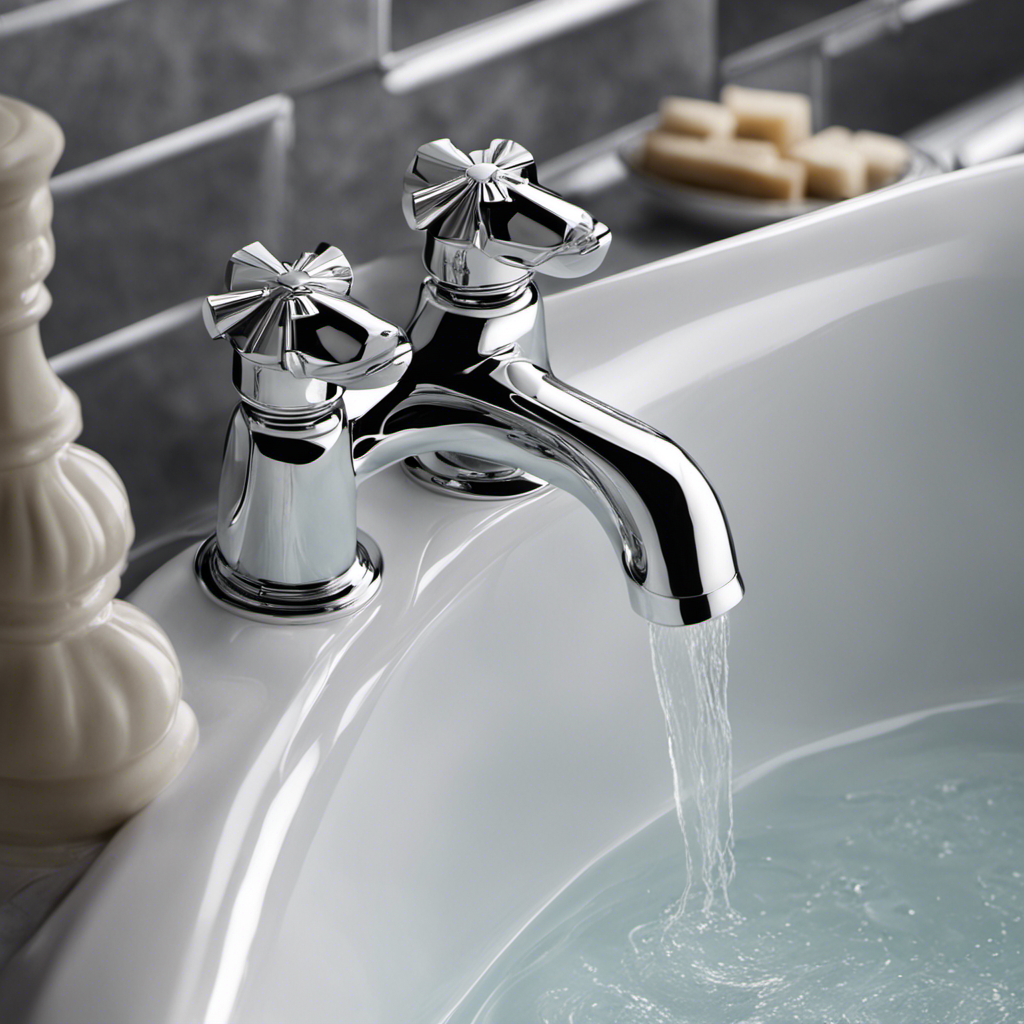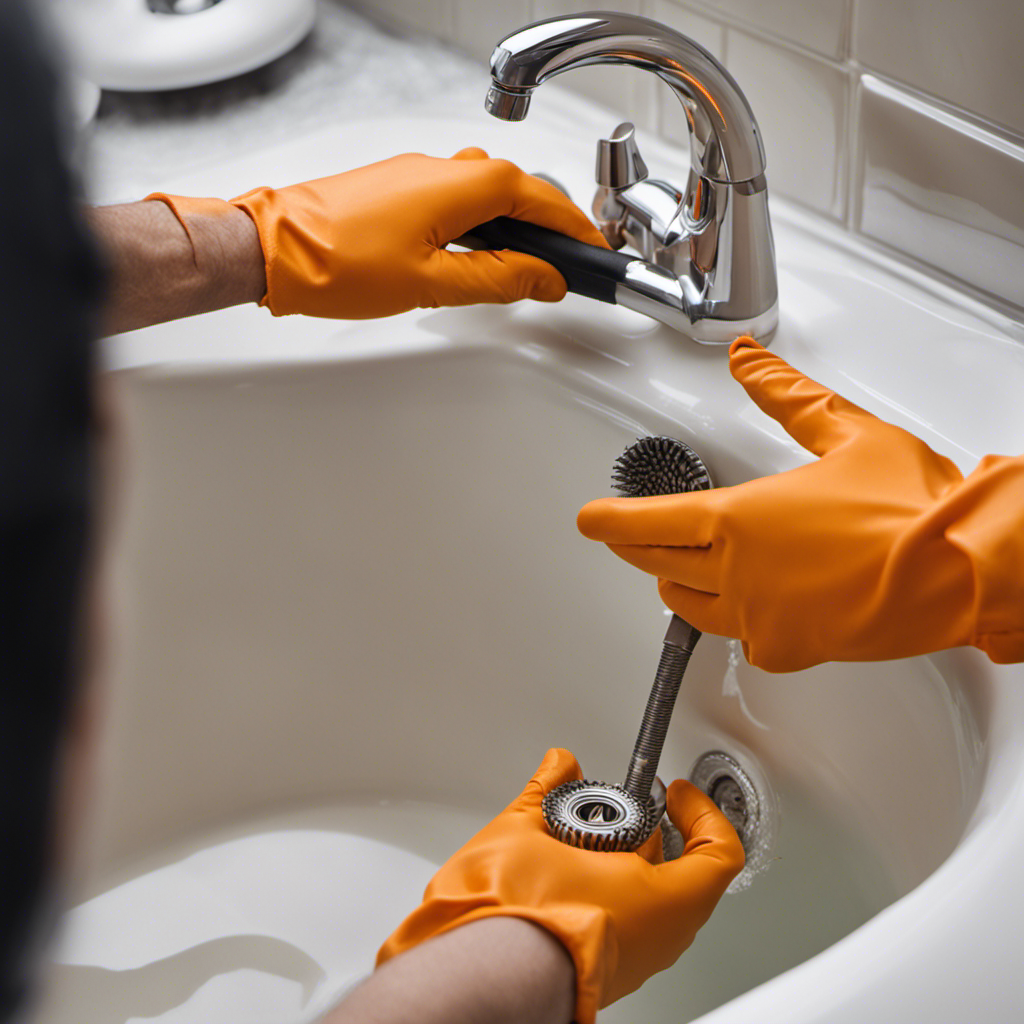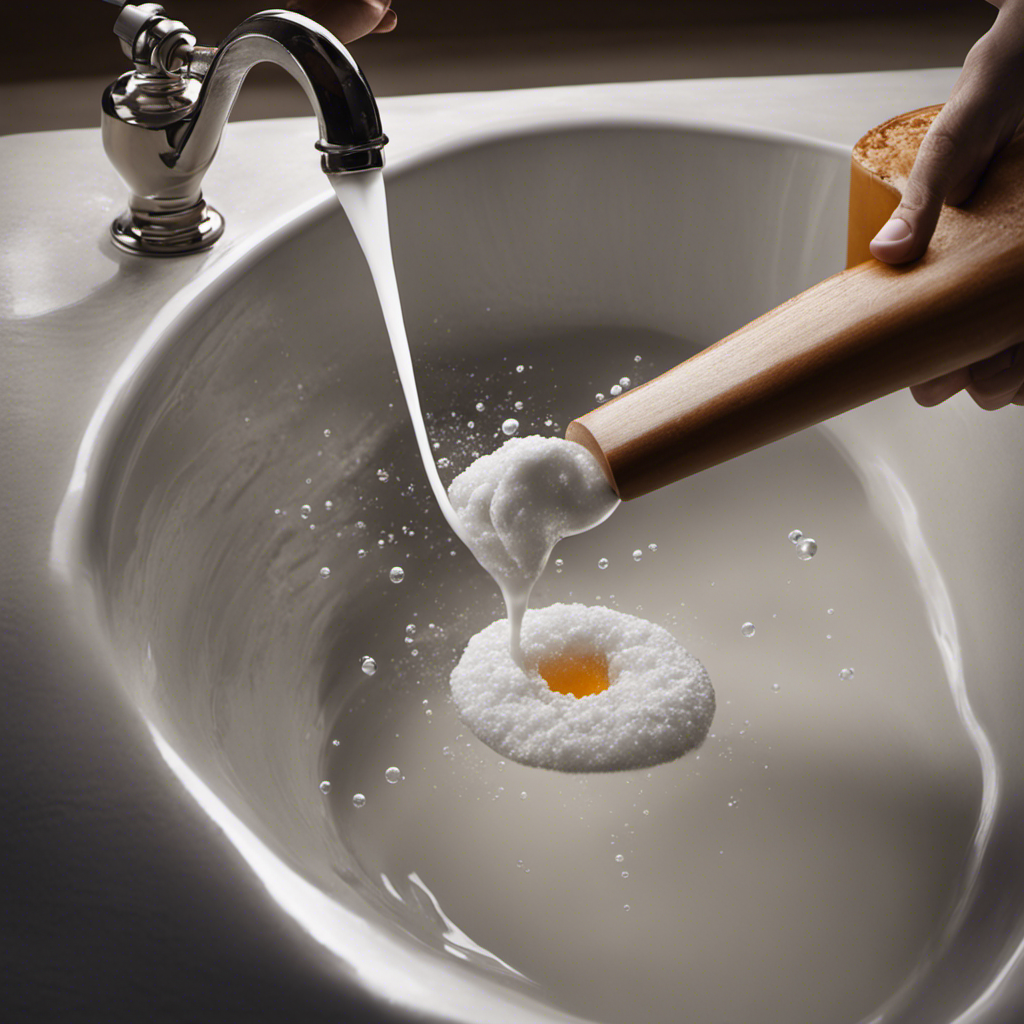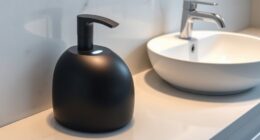So, you’ve got a stubborn drain stopper in your bathtub that just won’t budge, huh? Well, fear not, my friend, because I’ve got the solution for you.
In this handy guide, I’m going to walk you through the step-by-step process of removing different types of drain stoppers. With just a few tools and a little bit of know-how, you’ll be able to tackle this task with ease.
So, let’s get started and get that drain flowing freely again!
Key Takeaways
- There are different types of drain stoppers, including lift-and-turn, push-and-pull, and toe-touch, each requiring different removal methods.
- For a screw-in drain stopper, use pliers to unscrew it or locate and remove the set screw before pulling it out.
- To remove a toe-touch drain stopper, locate the small lever underneath and twist it counterclockwise with pliers or use a drain key tool if it’s stuck.
- When dealing with a lift-and-turn drain stopper, turn it counterclockwise to unscrew it, lift it straight up, and use pliers or lubricant if it’s stuck.
Tools and Materials Needed
You’ll need a few tools and materials to remove the drain stopper from your bathtub. The most common mistake people make is not having the right tools on hand. To avoid this, gather a pair of pliers, a screwdriver, and a pair of gloves for protection.
It’s also important to turn off the water supply before attempting to remove the drain stopper. This will prevent any accidents or water damage.
If you encounter a stubborn drain stopper that won’t budge, there are alternative methods you can try. One method is to use a lubricant, such as WD-40, to loosen any rust or debris that may be causing the stopper to stick. Another method is to use a drain stopper removal tool, which can be purchased at most hardware stores. This tool provides extra leverage and makes it easier to unscrew the stopper.
Remember to take your time and be patient when removing the drain stopper to avoid any damage to your bathtub.
Identifying the Type of Drain Stopper
To identify the type of drain stopper in your tub, start by examining the different mechanisms underneath the surface.
There are several types of drain stoppers commonly found in bathtubs. The first type is the lift-and-turn stopper, which requires you to lift and then turn it to open or close the drain.
Another common type is the push-and-pull stopper, where you simply push it down to close the drain and pull it up to open it.
Additionally, there are the toe-touch stoppers, which can be opened or closed by simply pressing them with your foot.
Now, let’s talk about some common problems with drain stoppers. One common issue is a clogged drain due to hair or debris getting trapped in the stopper mechanism.
Another problem is a stopper that won’t stay in place and keeps popping up.
These issues can often be fixed by cleaning the stopper or adjusting its position.
Removing a Screw-In Drain Stopper
Start by unscrewing the drain stopper using a pair of pliers. This type of drain stopper is commonly found in bathtubs and can be easily removed with a few simple steps.
Here’s how you can remove a push-pull drain stopper:
- Locate the small set screw underneath the stopper. This is usually found on the side or bottom of the stopper.
- Use a screwdriver to loosen and remove the set screw.
- Once the set screw is removed, you can now pull the stopper out of the drain.
- If the stopper is stuck, you can try using a pair of pliers to grip the stopper and twist it counterclockwise to loosen it.
Troubleshooting common drain stopper issues:
- If the stopper is not unscrewing, make sure you are using the correct size and type of pliers.
- If the set screw is stripped or stuck, you may need to use a penetrating oil to loosen it.
- If the stopper is still not coming out, it may be necessary to call a professional plumber for assistance.
Removing a Toe-Touch Drain Stopper
If you encounter a toe-touch drain stopper, try locating the small lever underneath it. This type of drain stopper is commonly found in bathtubs and can be a bit tricky to remove. Here are some common problems you may encounter and alternative methods to solve them:
| Common Problems | Alternative Methods |
|---|---|
| The drain stopper is stuck | Try using a pair of pliers to grip the stopper and twist it counterclockwise. If that doesn’t work, you can also try using a drain key tool to unscrew it. |
| The lever is broken | In this case, you can try using a rubber jar opener to get a better grip on the stopper and twist it counterclockwise. If that still doesn’t work, you may need to call a professional plumber to replace the broken lever. |
| The stopper won’t stay closed | This could be due to a worn-out gasket. You can try replacing the gasket with a new one to fix the issue. |
Remember to always be careful when attempting to remove a toe-touch drain stopper and if you’re unsure, it’s best to seek the help of a professional plumber.
Removing a Lift-and-Turn Drain Stopper
When removing a lift-and-turn drain stopper, you may encounter some resistance before it loosens. To make the process easier, follow these steps:
- Turn the stopper counterclockwise to unscrew it from the drain.
- Lift the stopper straight up to remove it from the drain.
- If the stopper is stuck, use a pair of pliers to grip the knob and turn it counterclockwise while lifting.
- If the stopper still won’t budge, apply some lubricant around the base to help loosen it.
Troubleshooting common issues with lift and turn drain stoppers:
- If the stopper won’t stay in the closed position, adjust the adjustable link or screw at the back of the stopper.
- If the stopper is leaking, check for any worn or damaged rubber gaskets and replace them if necessary.
- If the stopper is not sealing properly, clean any debris or hair that may be preventing a tight seal.
- If the stopper is broken or damaged beyond repair, it may be time to replace it with a new one.
Frequently Asked Questions
How Do I Clean a Clogged Bathtub Drain After Removing the Drain Stopper?
After removing the drain stopper, you can clean a clogged bathtub drain using various unclogging techniques. Common causes of bathtub drain clogs include hair, soap residue, and debris buildup.
Can I Replace a Broken Drain Stopper With a Different Type?
You can replace a broken drain stopper with a different type, but it’s important to consider the pros and cons. Different types offer varying levels of durability and ease of use.
What Should I Do if the Drain Stopper Is Stuck and Won’t Come Out?
To remove a stuck drain stopper, try using lubricant to loosen it or using a plunger to apply pressure. These methods can help dislodge the stopper and allow you to remove it easily.
How Often Should I Remove and Clean the Drain Stopper in My Bathtub?
To properly clean a bathtub drain stopper, it’s important to know how often to remove and clean it. Signs that indicate a drain stopper needs cleaning include slow drainage or unpleasant odors.
Are There Any Special Precautions I Should Take When Removing a Drain Stopper From an Old Bathtub?
Before removing a drain stopper from an old bathtub, there are important precautions to take. Make sure to have the necessary tools like pliers and a screwdriver to safely detach the stopper without causing any damage.
Conclusion
Congratulations! You’ve successfully learned how to remove different types of drain stoppers from your bathtub. By following the step-by-step instructions and using the right tools, you can easily tackle this common household task.
Whether you have a screw-in, toe-touch, or lift-and-turn drain stopper, you now have the knowledge and confidence to handle it like a pro.
So, next time you encounter a clogged drain or need to clean your bathtub, don’t fret! You’re equipped with the skills to tackle it head-on and enjoy a smoothly running drain.










